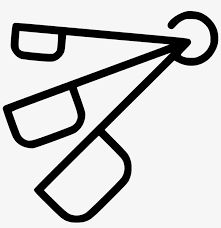︎ SmartEatingWare
How to promote a healthy diet and improving spatial qualities at diverse scales to an healthy office working culture?
By Camy Trinh ︎




Hypothesis
1. Dietary Issues in America
a. The prevalence of obesity was 39.8% and affected about 93.3 million of US adults in 2015~2016 [1]
b. Obesity-related conditions include heart disease, stroke, type 2 diabetes and certain types of cancer that are some of the leading causes of preventable, premature death. [6]
c. The estimated annual medical cost of obesity in the United States was $147 billion in 2008 US dollars; the medical cost for people who have obesity was $1,429 higher than those of normal weight [1]
d. Unhealthy eating and physical inactivity are leading causes of death in the U.S. [5]
e. Unhealthy diet contributes to approximately 678,000 deaths each year in the U.S., due to nutrition and obesity-related diseases [1]
2. Common Causes
a. Genetic conditions [3]
i. Vitamin deficiencies
ii. Eating disorders
b. Overeating/Undereating [2]
i. Depression and anxiety coping mechanism
ii. Socially-induced eating disorders
iii. Different ideas of food portions
3. Current Hit-or-Miss Solutions
a. Weight Watchers
i. Weight Watchers: “diet” inaccurately implies temporary lifestyle changes; differs per person depending their personal mographics and life decisions
b. Attempts to Track Energy Input/Output
i. Smart watches (i.e. Apple Watch, Fitbit)
ii. Personalized settings
1. Dietary Issues in America
a. The prevalence of obesity was 39.8% and affected about 93.3 million of US adults in 2015~2016 [1]
b. Obesity-related conditions include heart disease, stroke, type 2 diabetes and certain types of cancer that are some of the leading causes of preventable, premature death. [6]
c. The estimated annual medical cost of obesity in the United States was $147 billion in 2008 US dollars; the medical cost for people who have obesity was $1,429 higher than those of normal weight [1]
d. Unhealthy eating and physical inactivity are leading causes of death in the U.S. [5]
e. Unhealthy diet contributes to approximately 678,000 deaths each year in the U.S., due to nutrition and obesity-related diseases [1]
2. Common Causes
a. Genetic conditions [3]
i. Vitamin deficiencies
ii. Eating disorders
b. Overeating/Undereating [2]
i. Depression and anxiety coping mechanism
ii. Socially-induced eating disorders
iii. Different ideas of food portions
3. Current Hit-or-Miss Solutions
a. Weight Watchers
i. Weight Watchers: “diet” inaccurately implies temporary lifestyle changes; differs per person depending their personal mographics and life decisions
b. Attempts to Track Energy Input/Output
i. Smart watches (i.e. Apple Watch, Fitbit)
ii. Personalized settings
iii. Attempts to track and monitor physical activity regularly (sleep, steps, exercise)
iv. Optional ability to log food intake, and compare to physical activity
1. Food types and amounts need to be accurate
2. Requires smartphone
- Why?
The challenge I’ve set out to solve is how to create an easier method to identify and measure amounts of foods (to increase accuracy of logging foods into diet programs like Weight Watchers and smart watch food logs). How can we create a product that allows all to be aware of their dietary health, and allows all to easily monitor and regulate their food and drink consumption? Can be used to facilitate weight loss? Meant to promote awareness of food intake and effects on health?
- How?
Creating a product that enables users to easily identify and measure amounts of foods.
1. This product would not necessarily replace a smartwatch or the Weight Watchers Program, but rather it could function independent of these other products, but also have the ability to function in cooperation with these products.
2. For instance, many people already using a smartwatch do not always also participate in Weight Watchers, and vice versa. However, these two products work well in conjunction. What limits the success rate of both of these products is the accuracy of logging foods that the user consumed. My product would simply alleviate the errors in this data, improving the performance of the smartwatch and Weight Watchers.
3. The product itself would likely have a smart camera system installed on the top and bottom of the bowl to best identify the contents. And it would also have a smart sensor at the very bottom of the bowl to accurately read the weight of the contents. A similar system would be deployed across the other variations of this product, such as, in a mug, or even a flat plate.
- What?
Implementing an accurate method to log foods consumed through smart eating-ware will improve adults’ diet and portion control in the United States.
Design Intervention (what/how): X = Smart Eating-ware
Context (where): Y= United States
Sample (with whom): Z= adults
Outcome (your intended outcome): Effective portion control
- So What?
1. Users of the product will likely be surprised by how much the true amount of each item truly weighs. This may lead to frustration, but it will allow users to finally accurately log their foods (which would be done by the equipment itself, without a method to cheat).
2. This accuracy in logging the food will enable more accurate suggestions and results to come out of their Weight Watchers and/or smartwatch usage.
Design to Outcomes
Subjects will take a photo of their usual food portion size (pre-eatingware), then take a photo of their new portion size with eatingware like this:
︎
Works Cited
1. “Adult Obesity Facts.” CDC.gov. target="_blank">CDC.gov. Centers for Disease Control and Prevention. N.d. Web. Feb 2020.
2. Fit. “Are You Overeating or Undereating?” mfit.com. N.d. Web. Feb 2020.
3. Lyons, Libby. “Genetic Factors Behind Eating Disorders.” EatingDisorderHope.com. N.d. Web. Feb 2020.
4. “Overeating & Undereating.” Encinoeatingdisorders.com. N.d. Web. Feb 2020.
5.“Poor Nutrition.” CDC.gov. Centers for Disease Control and Prevention. N.d. Web. Feb 2020.
6. “Why Good Nutrition is Important.” CPSInet.org. Center for Science in the Public Interest. N.d. Web. Feb 2020.
7. “10 ‘Low Fat’ Foods That Are Actually Bad for You.” Healthline.com. N.d. Web. Feb 2020.
